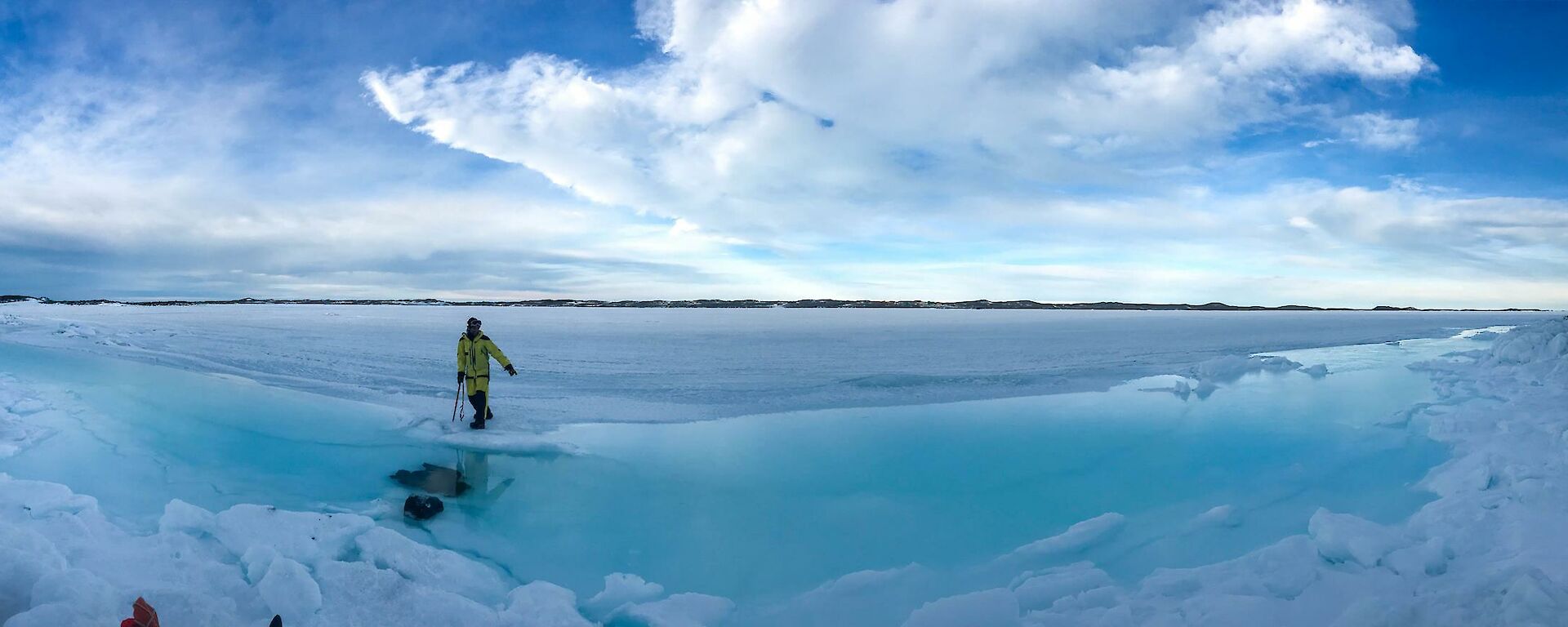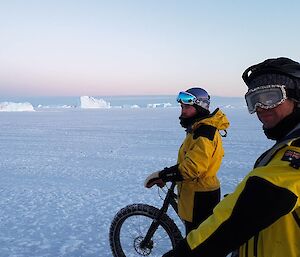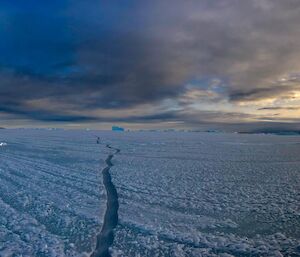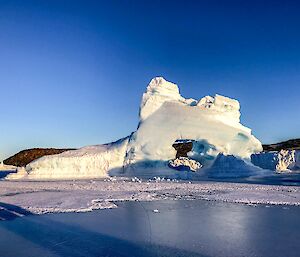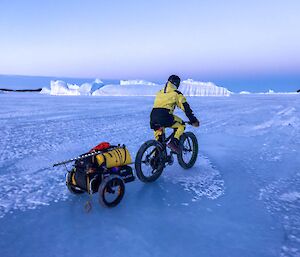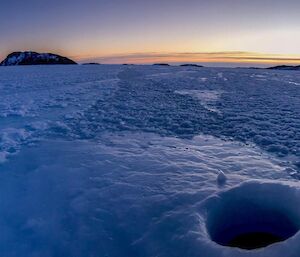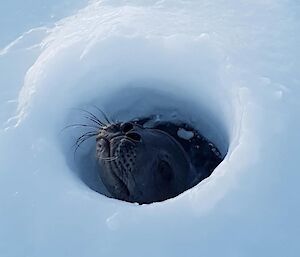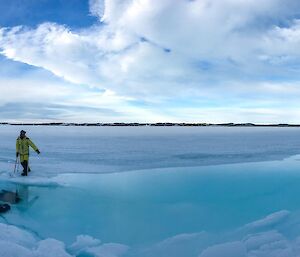The sunrise merges into sunset as the sun scoots around the horizon. The icebergs — now locked into position with the sea ice — glow bright orange for hours on end, casting long drawn out shadows for most of the day. The days are not-so-slowly getting shorter and shorter as we move towards the winter solstice. Come the start of June, we will not experience a sunrise for near on six weeks. It’s not hard to imagine why the majority of the sea life has packed up and departed station for the winter.
With the colder temperatures comes the freezing of the sea ice, growing about six centimetres thicker each week. A nuisance no doubt for the short legs of a penguin, but a saving grace for most of us on station — once the sea ice is thick enough it allows us a more convenient means of travel: quad bikes and Hägglunds!
But what to do until such a time? Walking is not always enjoyable with a 15+ kilogram backpack full of survival equipment. It’s time to bring out the bikes. Not the quad bikes (not just yet, anyway), but the good old-fashioned mountain bike. Armed with fat tyres, chains and a trailer for our survival backpacks, these chariots are begging to be taken out for pedal on the sea ice.
The ride itself; far more scenic than we would imagine. In and out of land-locked ice bergs, where we could see seals who have found their way through the gaps in the ice to rest on top for a while. We happened to cruise past a hole in the ice that was made by seals and used to breathe. During our discussion about how often seals would use that hole, a seal face popped through to take a breath, and likely see who’s making the racket above.
We decided to ride to nearby Gardner Island to have a short walk around the island and take advantage of its high viewpoint. We returned to where we left the bikes where, to our surprise, the tide had risen above the sea ice and we were now separated from them by a small moat that surrounded the entire island. We quickly came to the conclusion that my horizontal jump is similar to that of an Adélie penguin! Luckily, so are my rock collecting skills and we gathered a couple of rocks to make stepping stones across the smallest section we could find of the perilous moat of cycle separation. A hop, skip and a jump and we were reunited with our noble steel steeds, thundering back towards station.
The day provided an invaluable lesson about tides in the Antarctic and overall, a rather pleasurable riding experience. There’s not many places you can ride over 10 kilometres and have less than 300 millimetres elevation for the duration of the ride!
Chris Watson, Bureau of Meteorology Technician

